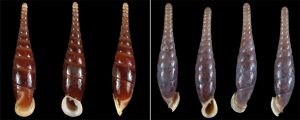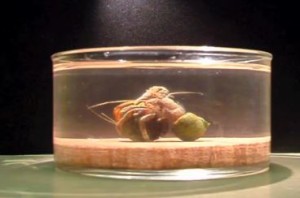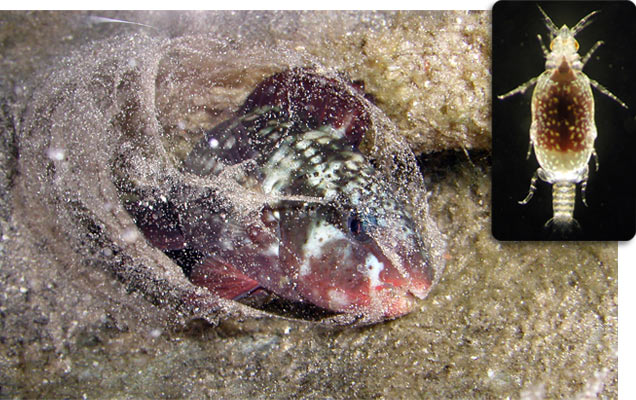 GUELPH, CANADA—When plucking a snail from the beach you’d be lucky to snag a left-coiling shell. That’s because only 5% of all snails are “lefties,” new research shows. Shell enthusiasts have long marveled at the lack of sinistral (left-coiling) snails among their collections, especially when other shelled mollusks, such as clams and the now-extinct ammonites—nautiluslike creatures that sported dozens of tentacles inside spiraled shells—are just as likely to be left- as right-coiling. Now, in the largest survey of its kind, researchers inspected more than 55,000 snail species—representing two-thirds of all gastropods—to reveal that left-coiling has arisen more than 100 times, and yet few of the species that have made the switch have been particularly successful. In the rare cases where left-coiling took off, it was almost always on land, the team reported here in a presentation last week at the annual meeting of the Canadian Society of Zoologists. The researchers don’t know why sinistrality is so rare underwater, but the most likely explanation, they say, is that unlike land snails that tend to hang around where they hatch out, the microscopic young of sea snails are carried on ocean currents that make the chance of meeting and reproducing with another left-coiling nest-mate slim. Without such a meeting, the left-coiling lineage goes extinct.
GUELPH, CANADA—When plucking a snail from the beach you’d be lucky to snag a left-coiling shell. That’s because only 5% of all snails are “lefties,” new research shows. Shell enthusiasts have long marveled at the lack of sinistral (left-coiling) snails among their collections, especially when other shelled mollusks, such as clams and the now-extinct ammonites—nautiluslike creatures that sported dozens of tentacles inside spiraled shells—are just as likely to be left- as right-coiling. Now, in the largest survey of its kind, researchers inspected more than 55,000 snail species—representing two-thirds of all gastropods—to reveal that left-coiling has arisen more than 100 times, and yet few of the species that have made the switch have been particularly successful. In the rare cases where left-coiling took off, it was almost always on land, the team reported here in a presentation last week at the annual meeting of the Canadian Society of Zoologists. The researchers don’t know why sinistrality is so rare underwater, but the most likely explanation, they say, is that unlike land snails that tend to hang around where they hatch out, the microscopic young of sea snails are carried on ocean currents that make the chance of meeting and reproducing with another left-coiling nest-mate slim. Without such a meeting, the left-coiling lineage goes extinct.
:: Read more here ::

 Even the ocean has bedbugs. Tiny blood-sucking crustaceans (inset) roam the seas, nipping at the scales of passing fish. But the parrotfish (Chlorurus sordidus) has evolved an unusual defense. According to a study published online today in the Proceedings of the Royal Society B, the fish spend up to an hour spinning cocoons from their own mucous before they settle down to slumber for the night. These transparent, gelatinous balls of spit are large enough to envelope the fish from head to tail. By gently pushing fish from their cocoons without waking them, researchers showed that those sleeping without protection were 80% more likely to be bitten by the crustaceans than those they left untouched. Producing these mucous membranes costs just over 2% of the fish’s daily energy budget; apparently a worthwhile investment against things that go bite in the night.
Even the ocean has bedbugs. Tiny blood-sucking crustaceans (inset) roam the seas, nipping at the scales of passing fish. But the parrotfish (Chlorurus sordidus) has evolved an unusual defense. According to a study published online today in the Proceedings of the Royal Society B, the fish spend up to an hour spinning cocoons from their own mucous before they settle down to slumber for the night. These transparent, gelatinous balls of spit are large enough to envelope the fish from head to tail. By gently pushing fish from their cocoons without waking them, researchers showed that those sleeping without protection were 80% more likely to be bitten by the crustaceans than those they left untouched. Producing these mucous membranes costs just over 2% of the fish’s daily energy budget; apparently a worthwhile investment against things that go bite in the night.